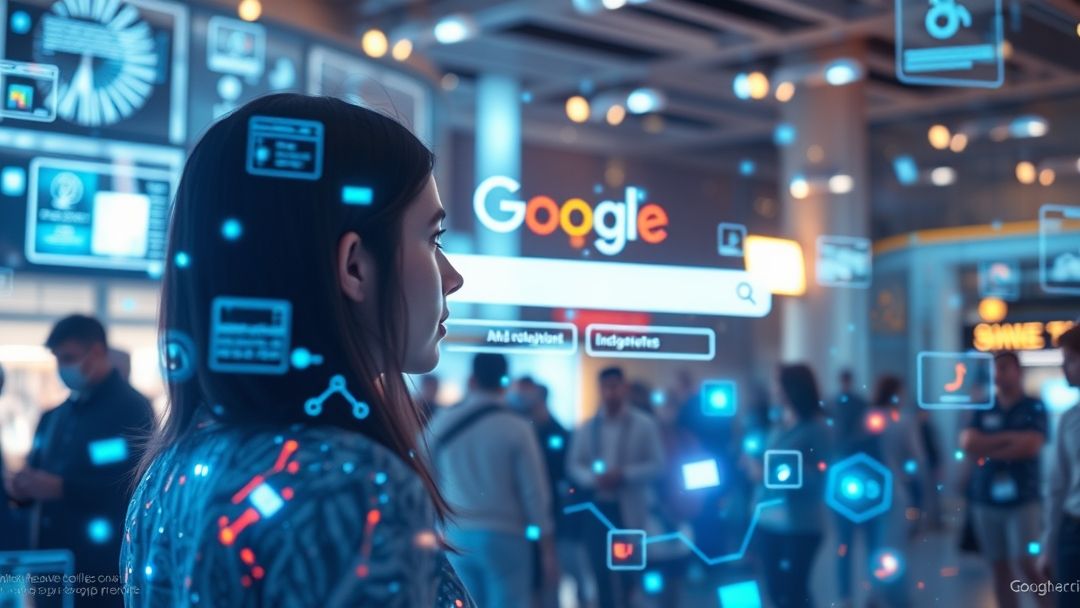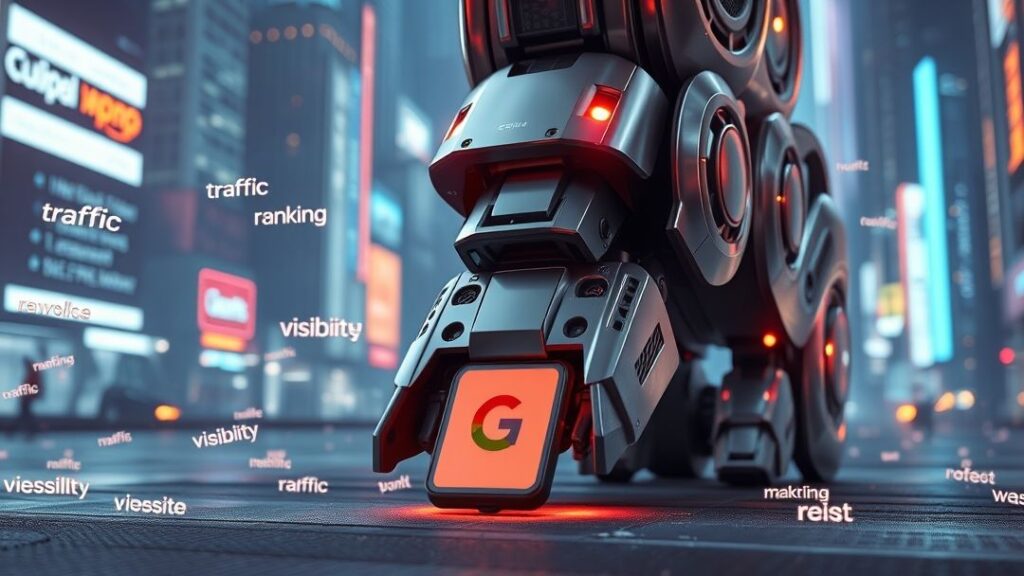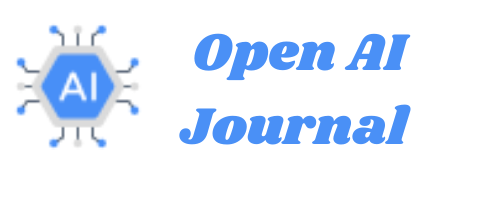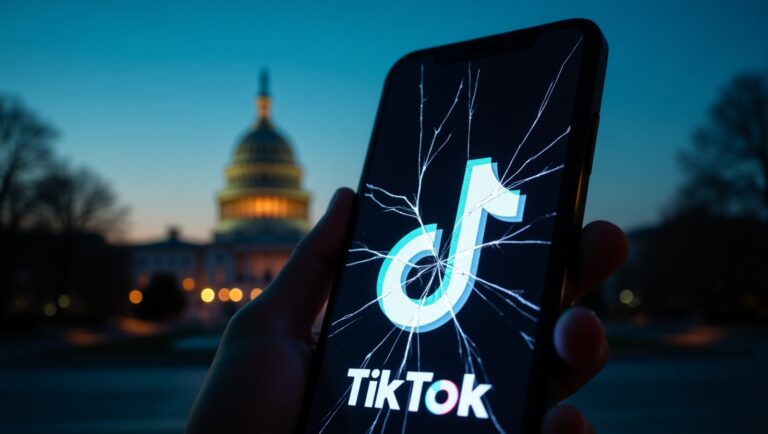Google Revolution: The Next-Gen Search is Here

Table of Contents
“This isn’t just a new Google. This is the end of the internet as we knew it. It’s the new Google Revolution”
— AI researcher at a major tech firm
Google has quietly released a revolution. The search engine we’ve all relied on for decades is undergoing a seismic transformation. With the rollout of AI Overviews, multimodal understanding, predictive prompts, and generative results, Google is no longer a search engine. It’s becoming an AI oracle.
But here’s the burning question:
Is this innovation… or information control?
The Dawn of the Google Revolution
Back in the early 2000s, Google earned its dominance by being ruthlessly efficient at one thing: helping people find the most relevant web pages through a simple box and ten blue links. It was a democratic tool in many ways—anyone could rank with good content, backlinks, and basic SEO.
But something has changed in 2025. What we’re seeing now isn’t just another product update or UX overhaul. It’s a transformation at the core of what Google fundamentally is. Instead of organizing the web, Google is beginning to interpret it. And in doing so, it’s changing the relationship between users and information itself.
AI Overviews mark a new beginning. For the first time, Google is no longer just directing traffic. It’s answering questions itself—composing summaries, offering insights, and synthesizing content from across the web into a unified output. The implications are vast. In this shift, Google is positioning itself not as a search engine but as an answer engine, a subtle but seismic repositioning that changes everything from journalism to ecommerce to education.
The magnitude of this change mirrors past technological revolutions, like the introduction of the printing press or the rise of the smartphone. Yet, this one’s quieter. It’s embedded within the same interface we’ve used for decades. The bar looks the same. The logo still spins on holidays. But underneath it all, machine learning models are rewriting the internet in real time.
Let’s consider how quietly disruptive this is. According to data from SimilarWeb (2025), the average time users spend on search results pages has decreased by 37% since the rollout of AI Overviews. Users now bounce off traditional websites at an alarming rate because they don’t need to click anymore. The answers appear above the fold, pre-packaged and ready to consume. Clickthrough rates across multiple industries—from health to home repair—have declined as much as 44% since January alone.
| Industry | Avg. CTR (2023) | Avg. CTR (2025) | Decline % |
|---|---|---|---|
| Health | 21.3% | 12.4% | -41.8% |
| Ecommerce | 18.5% | 10.9% | -41.1% |
| Education | 16.9% | 9.7% | -42.6% |
| Tech/How-to | 22.7% | 13.2% | -41.9% |
These numbers aren’t just metrics. They represent lost visibility, lost revenue, and an existential threat to thousands of content creators who built their livelihoods on web discovery. Yet users themselves may not fully recognize this power shift, because the AI feels helpful. It answers their queries in seconds.
The illusion is one of convenience, but the trade-off is transparency. We’ve entered a phase where the very structure of the web is being redefined—not by thousands of independent websites, but by a single company’s algorithmic synthesis.
What Is AI Overviews—And Why It’s a Game-Changer
AI Overviews, introduced officially at Google I/O 2024, represent the culmination of Google’s years-long investment in artificial intelligence, particularly its Gemini model and DeepMind research. It’s an interface enhancement, yes, but it’s also a philosophical shift. Traditionally, Google served as an index—a giant, ever-expanding catalog of information. It showed you the top results and left the choice to you. Now, with Overviews, Google is making the choice for you.
Here’s how it works: Google’s AI scours the web, identifies patterns in responses, cross-references them with its language model outputs, and generates a high-confidence summary. That summary appears above all organic results, occupying the most prominent real estate in the SERP. There’s no need to scroll. No need to explore further. The AI has already done the reading, thinking, and summarizing for you.
This is efficient—but it’s also a form of gatekeeping. Consider what it means for niche expertise. A brilliant but little-known blogger may offer a revolutionary insight, but unless that voice aligns with the consensus pattern Google recognizes, it will likely be omitted from the AI Overview. In essence, we’re seeing a trend toward epistemic flattening. The same types of sources will be elevated. The same perspectives repeated.
The logic behind this approach is understandable. Google wants to reduce misinformation and provide fast, helpful answers. But we must also ask: Who decides what’s correct? What voices are being left out? When the algorithm consolidates knowledge, it also consolidates authority.
From a UX standpoint, users are adapting quickly. According to Statista (2025), over 62% of mobile users now engage directly with AI Overviews without clicking further. That number is up from just 18% in mid-2024. On desktop, it’s slightly lower at 53%, but rising rapidly.
| User Platform | AI Overview Engagement (2024) | Engagement (2025) |
|---|---|---|
| Mobile | 18% | 62% |
| Desktop | 11% | 53% |
The game-changer, then, is not just in the product—it’s in the behavior. Google is training an entire generation to expect instant, singular answers instead of exploratory journeys. It’s moving from a librarian to a narrator. That shift carries enormous weight, especially in matters of politics, science, health, and ethics.
Furthermore, AI Overviews are likely to become multimodal. Google is already experimenting with incorporating images, voice, and video snippets. That means soon, your search might return not a page, but a full multimedia experience generated on the fly. It will be engaging. Personalized. And, depending on your point of view, potentially manipulative.
The End of SEO as We Know It?

Search engine optimization has always been about understanding algorithms. From keyword stuffing in the 2000s to E-E-A-T principles today, SEO has evolved alongside Google. But AI Overviews represent a break from that evolution—a new chapter where traditional SEO signals no longer guarantee visibility.
Content creators who once depended on metadata, backlinks, structured schema, and topical authority now find themselves out of the loop. Google’s AI doesn’t just rank pages—it paraphrases them. It distills their meaning, summarizes it, and often presents it without attribution. This creates an asymmetry where the content creator bears the cost of research and creation, but the AI receives the engagement.
Take, for example, the recent shift in affiliate marketing. According to Ahrefs (2025), organic clicks to affiliate content have dropped by 58% in categories where AI Overviews dominate. That’s catastrophic for sites that rely on Amazon partnerships or product roundups. Google is not sending users to these sites anymore—it’s ingesting them.
| SEO Strategy | Avg. Organic Clicks (2023) | Clicks (2025) | Decline % |
|---|---|---|---|
| Product Reviews | 240,000 | 102,000 | -57.5% |
| How-To Guides | 180,000 | 85,000 | -52.8% |
| Listicles | 200,000 | 91,000 | -54.5% |
| Comparison Posts | 150,000 | 64,000 | -57.3% |
Moreover, the very metrics that once defined SEO success—bounce rate, time-on-page, pages per session—are becoming irrelevant in a world where users never leave the SERP. Google is the page now.
This isn’t just a monetization problem. It’s a creative one. If the incentive to write, analyze, or explore is removed because AI will co-opt your content without traffic or recognition, what happens to the diversity of voices online? We risk entering an era of informational monoculture, where the same ideas are reprocessed endlessly.
Some publishers are exploring ways to opt out of AI training datasets, or watermark content to avoid LLM ingestion. But these solutions are temporary. The dominant position Google holds means resistance is limited in scope. And while SEO professionals pivot to optimize for visibility inside Overviews, the lack of transparency in how those summaries are generated makes it feel like shooting in the dark.
The end of SEO, then, is not literal—but it is philosophical. We’re moving from an era of competitive optimization to one of algorithmic compliance. From creative differentiation to informational conformity. That shift may make things easier for users in the short term. But it could ultimately make the web a narrower, less curious, less human place.
In this new paradigm, perhaps the most important SEO strategy is no longer ranking. It’s resilience. Finding ways to build loyal audiences through email, video, apps, and platforms where you own the connection. Because in a world where Google speaks for the web, being heard will require more than being indexed.
Who Benefits from Google’s AI Overviews?
Google’s AI Overviews have redefined the search experience by providing users with concise, AI-generated summaries directly within search results. This shift has created a new hierarchy of beneficiaries in the digital ecosystem.
Major News Outlets and Established Publishers: A study by Search Engine Journal reveals that the top 10 publishers capture nearly 80% of all news mentions in AI Overviews. This dominance suggests that established media entities with extensive archives and high domain authority are more likely to be featured in AI-generated summaries, thereby increasing their visibility and reinforcing their influence.
Large Enterprises and E-commerce Platforms: Companies like Amazon and Expedia have adapted swiftly to the AI-driven search paradigm. Expedia, for instance, is integrating AI to streamline travel planning, allowing users to send social media content to the platform, which then identifies locations and offers travel options.
Advertisers and Paid Content Providers: With AI Overviews reducing the need for users to click through multiple links, advertisers are exploring new strategies to maintain visibility. This includes investing in paid placements within AI-generated content and optimizing for AI visibility to ensure their offerings are included in summarized results.
Google Itself: By integrating AI Overviews, Google enhances user engagement within its ecosystem, potentially increasing ad revenue and reinforcing its position as the primary gateway to information. This consolidation of user attention within Google’s platforms underscores the company’s strategic advantage in the evolving digital landscape.
The Great Collapse of Content Discovery
The introduction of AI Overviews has significantly altered the traditional pathways through which users discover content online.
Decline in Organic Traffic: Content creators and publishers have reported a noticeable decrease in organic traffic due to AI Overviews providing direct answers to user queries. This trend diminishes the likelihood of users clicking through to original content sources, impacting the visibility and revenue of smaller publishers.
Challenges for Niche and Independent Publishers: Smaller content creators often lack the domain authority to be featured in AI-generated summaries. This exclusion exacerbates the visibility gap between major publishers and independent voices, potentially leading to a homogenization of available information.
Impact on User Engagement: While AI Overviews offer convenience, they may also reduce the depth of user engagement with content. By providing summarized answers, users might miss out on nuanced perspectives and comprehensive analyses that are typically found in full-length articles.
Potential for Misinformation: Instances of AI Overviews providing incorrect or misleading information have been documented, raising concerns about the reliability of AI-generated content. This issue underscores the importance of critical evaluation and the need for transparency in AI content generation processes.
What Critics, Creators, and Coders Are Saying
The advent of AI Overviews has elicited a spectrum of responses from various stakeholders in the digital content ecosystem.
Content Creators and Publishers: Many express concern over the potential erosion of their readership and revenue streams. The direct delivery of information via AI Overviews reduces the incentive for users to visit original content sources, thereby impacting the sustainability of content creation.
Technologists and AI Ethicists: Experts highlight the need for transparency in AI algorithms and the importance of addressing biases in AI-generated content. The reliance on AI for information dissemination necessitates robust ethical frameworks to ensure accuracy and fairness.
Users and the General Public: While some users appreciate the efficiency of AI Overviews, others express skepticism regarding the accuracy and depth of AI-generated summaries. The balance between convenience and comprehensive understanding remains a topic of public discourse.
Regulatory Bodies: Regulators are scrutinizing the implications of AI Overviews on competition and information diversity. Concerns about monopolistic practices and the marginalization of diverse voices are prompting discussions on the need for oversight and potential policy interventions.
The Real Battle: Open Web vs. Walled AI Gardens

The digital landscape is undergoing a seismic shift, with AI-driven search tools like Google’s AI Overviews and Perplexity AI redefining how users access information. These tools offer concise, AI-generated summaries directly within search results, reducing the need for users to click through to external websites. While this enhances user convenience, it raises concerns about the future of the open web.
A study by Search Engine Journal reveals that 43% of Google’s AI Overviews link back to Google’s own properties, contributing to a “walled garden” effect where users are increasingly contained within a single ecosystem. This trend threatens the diversity and accessibility of information, as independent publishers and smaller websites struggle to maintain visibility.
The implications are significant for content creators and advertisers. With AI Overviews decreasing click-through rates by 34.5% for top-ranking pages, traditional SEO strategies are being upended. Advertisers are reallocating budgets, with AI-powered search ad spending in the U.S. projected to surge from just over $1 billion in 2025 to nearly $26 billion by 2029.
This transformation necessitates a reevaluation of digital strategies, emphasizing the need for transparency, diversity, and equitable access to information in the age of AI.
The Conspiracy Theories You Weren’t Supposed to Consider
The integration of AI into search engines has not only transformed information retrieval but also sparked concerns about the dissemination of misinformation and conspiracy theories. AI-generated summaries have, at times, propagated false narratives, such as claims that Barack Obama is a Muslim or that humans should consume rocks.
These instances highlight the challenges AI faces in evaluating source credibility and context. A report by Tech Policy Press emphasizes that AI chatbots often lack the media literacy to discern credible information, making them susceptible to amplifying fringe theories.
The potential for AI to inadvertently legitimize conspiracy theories underscores the importance of robust oversight, transparency in AI algorithms, and the inclusion of diverse perspectives to ensure the integrity of information disseminated through AI-driven platforms.
What You Can Do to Prepare for the Shift
As AI continues to reshape the digital landscape, adapting to these changes is crucial for content creators, marketers, and users alike.
For Content Creators and Marketers:
- Optimize for AI Visibility: Structure content with clear headings, bullet points, and concise summaries to enhance AI readability.
- Enhance Credibility: Include author bios, cite reputable sources, and maintain up-to-date information to establish trustworthiness.
- Leverage Structured Data: Implement schema markup to provide AI with context about your content, improving its chances of being featured in AI summaries.
For Users:
- Diversify Information Sources: Rely on multiple platforms and perspectives to obtain a well-rounded understanding of topics.
- Critically Evaluate AI-Generated Content: Be aware of the limitations of AI and verify information through trusted sources.
By proactively adapting to these changes, stakeholders can navigate the evolving digital environment more effectively.
Final Thoughts : A World Beyond Search
The advent of AI in search engines marks a pivotal moment in the digital era, redefining how information is accessed and consumed. While AI offers efficiency and convenience, it also presents challenges related to information diversity, credibility, and the sustainability of independent content creation.
The future of the open web hinges on balancing technological advancements with the preservation of diverse, accessible, and trustworthy information. Stakeholders must collaborate to ensure that AI integration enhances, rather than diminishes, the richness of the digital information ecosystem.






